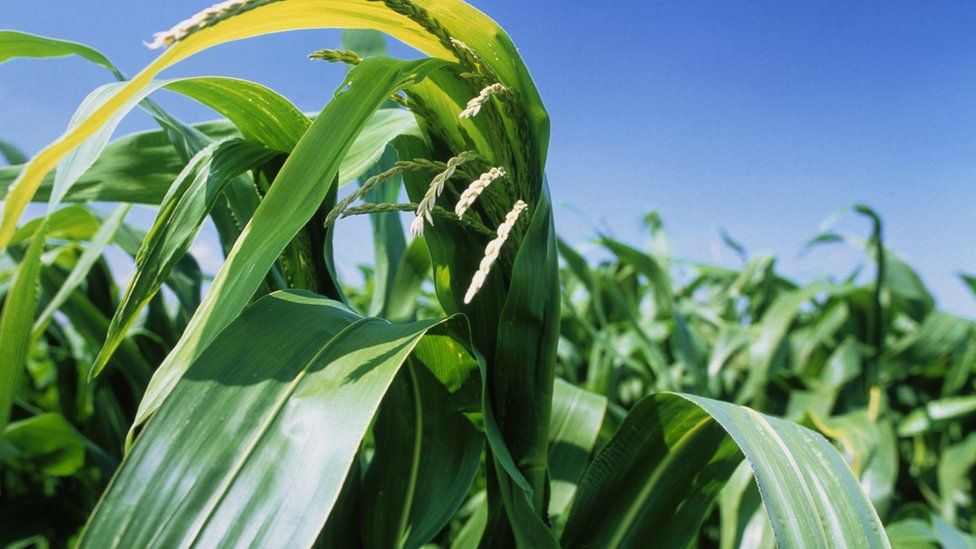Drought triggers 'austerity' root system in grass crops
- Published

Grass species of crops adopt an "austerity" strategy and limits the development of its root system during times of drought, a study has revealed.
The results offer an insight into the little understood biology of roots and could help breeding effort to improve drought tolerance, say scientists.
Many of the world's key food and energy crops belong to the grass family and are often grown in drought-prone areas.
"What we were really surprised to see is that under drought stress conditions, there is a fairly simple but dramatic change in the structure of the root system," said lead author Jose Dinneny, a researcher at the Carnegie Institution for Science, based at Stanford University, US.
"If you imagine a grass plant growing in the field, at the base of the plant - the part that interacts with the soil - there are a large number of these specialised roots (crown roots) that penetrate into the soil," he told BBC News.
Roots off
"We were able to find that these particular roots were the target of the drought stress signalling. By analysing their development, we were able to get a very clear view of how the root system changed.
"Initially, this was counterintuitive as we saw, during periods of water deficit or drought, the plant actually reduced the number of roots it produced."
Dr Dinneny, also an assistant professor at Stanford University's department of biology, said this behaviour helped preserve the limited availability of water in the soil.
"When we think of a drought, especially in California, people often turn to using groundwater resources and people can over-extract groundwater, affecting the structure and sustainability of important aquifers," he observed.
"Plants are, essentially, more intelligent than people in periods of drought as they restrict the rate in which they are taking up water and that preserves the lifespan of water in the soil. This is generally known as water banking.
"As the plant reduces its water up take, the water supply lasts for a longer period of time, meaning that the plant will be able to survive for a longer period of time and hopefully enter reproduction and produce seeds."
Dr Dinneny added that the change in the root system's structure was not a permanent one.
"if there is rainfall, the plant has tremendous capacity to switch rapidly into the activation of crown roots and the development of a very large and robust root system," he explained.
'Absolutely critical'
Grass, as a family, include many of the critical food, feed and fibre crops in the world, such as rice, maize, sorghum, millet, wheat and barley.
"To understand how this family responds to changes in water availability is absolutely critical," he said.
"Water is also the most limiting resource in agriculture, so looking at root responses to water was an area we wanted to focus on.
"It is also an area where very little was understood, in part because of the difficulty of accessing the biology of roots in field conditions," Dr Dinneny added.
"Part of the innovation in the research we have published was to develop new methods that allowed us to visualise living root systems and the changes in root growth that occurred in drought stress conditions."
Follow Mark on Twitter.
- Published21 March 2016
- Published25 September 2015
- Published16 August 2014